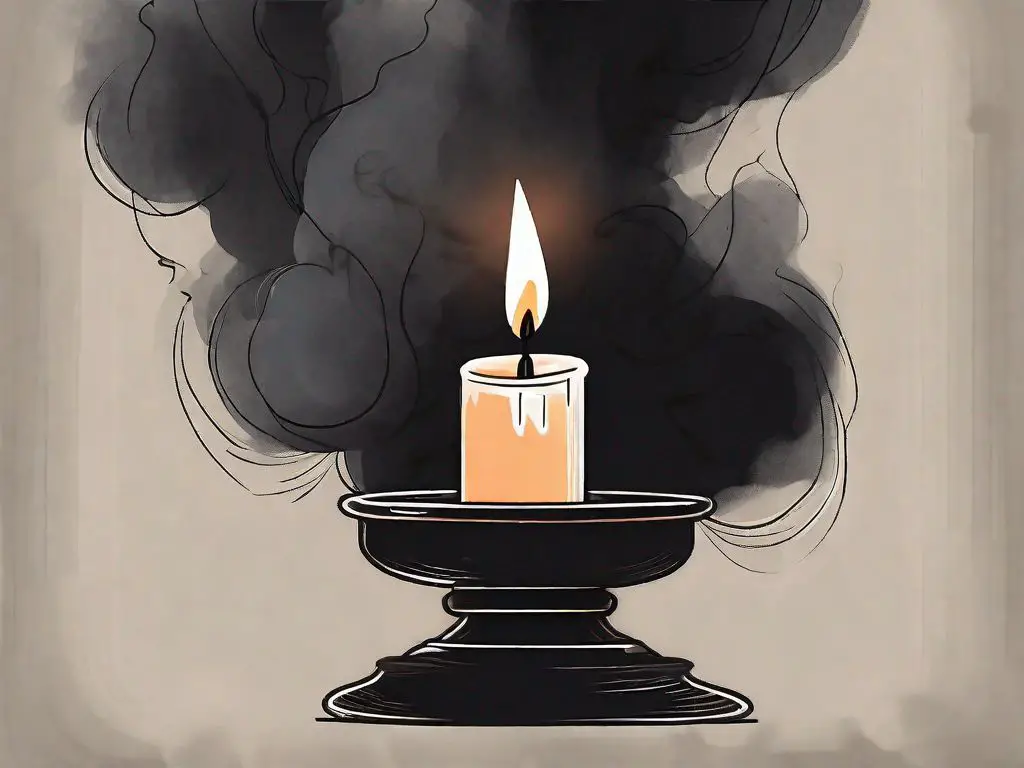What Happens If You Melt Candle Wax Too Hot?
Properly melting wax is a crucial part of candle making. Heating wax to the right temperature ensures proper fragrance binding, even finish, and optimized burn performance. However, overheating wax can cause several issues that negatively impact the finished candle.
Candle wax is designed to melt at specific temperatures between 120-200°F depending on the wax type. Exceeding the melting point leads to changes in wax structure and composition that can affect how well fragrance oils bind, how the wax adheres to the candle vessel, crystallization, and burning performance. Additionally, severely overheating wax poses safety hazards.
While fixing overly hot wax is possible, it requires extra time and care in the candle making process. Following proper wax melting instructions can help avoid many headaches down the road. This guide will cover ideal wax temperatures, signs of overheating, and remedies to salvage wax for the highest quality candles.
Melting Points of Wax
Different types of candle waxes have varying melting points that are influenced by their chemical composition and processing methods. According to Blended Waxes, some common candle wax melting points are:
- Beeswax: 144-149°F (62-65°C) (https://blendedwaxes.com/blog/wax-melting-point-factors)
- Paraffin Wax: 135-145°F (57-63°C)
- Soy Wax: 135-145°F (57-63°C)
- Palm Wax: 126-143°F (52-61°C)
- Gel Wax: 140-160°F (60-71°C)
The melting point indicates the temperature at which solid wax transitions into a liquid state. Knowing the proper melting points for the specific wax type is important for candle making. Exceeding the ideal temperature range can negatively impact wax properties and candle performance.
Ideal Melting Temperatures
The recommended wax melting temperatures vary depending on the type of candle wax used.
For soy wax, the ideal melting temperature is between 113-160°F (45-71°C) according to Nikura. Higher quality soy wax like Golden’s 464 soy wax works best melted between 185-200°F (85-93°C) as advised by candle making experts.
Paraffin wax melts between 115-145°F (46-63°C), with most paraffin waxes melting around 120-130°F (49-54°C) according to Brook Otis Creations.
Beeswax has a melting point between 144-149°F (62-65°C).
In general, melting wax between 185-200°F (85-93°C) provides enough fluidity for most candle making without overheating the wax.
It’s important not to overheat candle wax much beyond the recommended temperatures. Excessive heat can adversely affect wax appearance, fragrance retention, and burn performance.
Signs of Overheating Wax
When wax is heated to temperatures that are too high, there are several clear signs that indicate it is overheating.
The most obvious sign is a change in the wax’s color. Most candle wax is designed to remain white, ivory, or cream-colored when heated to proper melting temperatures. However, overheating causes the wax to turn yellow, amber, brown, or even black as it starts burning and scorching.

Another clear indicator of overheating is if the wax starts smoking or produces a burning smell. This is often accompanied by small bubbles on the surface as impurities burn. According to an excerpt from the novel The Liberation, overheated candle wax can even start to “ooze” when taken to extreme temperatures (source).
The wax may also lose its smooth liquid consistency when overheated. It can become grainy, thick, and sticky, making it difficult to pour or work with. So if the wax is discolored, smoking, smells burnt, or has an abnormal texture, it’s a sign to lower the temperature.
Effects on Fragrance
One of the biggest issues with overheating wax is that it can cause the fragrance oils to “flash off” or burn off at high temperatures. Most fragrance oils are volatile and have a flash point between 160-200°F. If the wax is heated above this temperature, the fragrance molecules will evaporate and escape the wax mixture before it cools and sets. The end result is a candle with little to no scent throw or aroma, even if a normal amount of fragrance oil was added initially.
According to experts, heating wax above 185°F can cause fragrance oils to burn off and escape the wax. The higher the temperature, the more fragrance is lost. This is because the molecular vibrations increase with heat, causing the fragrance molecules to transition from liquid to gas and exit the wax (Newhobbybox.com).
To retain as much scent as possible, it’s recommended to keep wax temperatures below 185°F when adding fragrance oils. The optimal temperature range is 150-170°F (Brookotascreations.com). This allows the fragrance to properly bind with the wax molecules as they cool and solidify. Overheating can mean losing 50% or more of the intended fragrance in a candle.
Wax Crystallization
When wax is heated to the proper temperature range, the molecules fully liquefy and mix together. Upon cooling, they recrystallize in an orderly structure, giving the wax its opacity and rigidity. However, overheating wax can lead to incomplete crystallization. According to research on soy wax crystallization, heating wax to excessively high temperatures prevents the molecules from properly realigning as the wax cools (https://thecandleland.com/soy-wax-crystallization/). The crystallization process gets interrupted, resulting in a soft or tacky wax with poor structural integrity.
In candle making forums, users report crumbly, gritty wax with visible crystal formations if their candle wax was overheated. The wax never fully hardens and ends up molting and flaking apart (https://www.craftserver.com/topic/87977-help-bad-molting-crating-and-crystalizing-after-first-second-burn/). Basically, the high temperatures deform the crystals needed to form a cohesive solid structure. The wax remains partially liquefied, unable to recrystallize properly. Proper temperatures allow thorough mixing in the liquid phase, and controlled cooling for orderly crystallization.
Poor Surface Finish
Overheating wax can lead to cosmetic issues with the candle’s surface finish. According to Candlepursuits.com, excessively high temperatures can cause the wax to take on a frosty or frosted appearance once cooled and set1. The overheated wax may also fail to adhere properly to the container, resulting in wet spots or gaps between the wax and the container sidewalls. This happens because overheating alters the wax’s ability to contract uniformly as it cools2. The end result is an unattractive finish that looks lower quality.
Safety Considerations
When working with hot wax, there are some important safety precautions to keep in mind. Overheating wax increases the risk of fire and burning hazards.
Wax heated above 185°F is considered a fire hazard, as it can easily ignite if it comes into contact with an open flame or sparks. Temperatures above 200°F increase the chances of the wax spontaneously combusting. According to the National Candle Association, the flash point of wax is between 400-500°F, meaning it can combust if it reaches this temperature range. But well before reaching these extreme temperatures, spilled wax can cause severe burns if it comes in contact with skin. Proper attire like long sleeves, closed toe shoes, eye protection, and heat resistant gloves are a must when pouring hot wax.
Work in a well-ventilated area when melting wax to prevent build up of flammable wax vapors. Never leave melting wax unattended. Keep baking soda on hand to smother wax fires. Make sure to turn off all open flames from candles, cooktops, etc. before starting any candle making. Avoid splashing wax by pouring slowly and at lower temperatures. Allow all wax to fully harden before moving or handling.
By following proper safety precautions, candle making can be an enjoyable and hazard-free hobby. But remember that hot wax requires extreme care to prevent fires, burns, and other injuries.
Fixing Overheated Wax
If you’ve overheated your candle wax, there are a few things you can try to salvage it:
First, you can try re-melting the wax. According to this Reddit thread, re-melting overheated wax can help reset the crystalline structure. Be sure to melt the wax at the proper temperature – around 185°F for soy wax. Higher temperatures can damage the wax further.
Second, you can try adding oil back into the overheated wax. Oils help provide an even burn and fragrance throw. Add 5-10% oil by weight as recommended by CandleScience. Stir thoroughly to fully incorporate.
Finally, you can combine the overheated wax with properly melted new wax. Use around a 1:1 ratio for best results. The good wax will help stabilize the overheated wax. Fully combine the two waxes while molten.
With some work, overheated candle wax can usually be fixed. Just be sure to re-melt, add oil, and combine with good wax as needed. Proper temperatures and thorough mixing will help get your overheated wax back on track.
Key Takeaways
Here are some main points to recap on ideal wax melting temperatures and the effects of overheating candle wax:
Most candle waxes melt between 37-88°C (100-190°F), with each type having different ideal temperatures (source). Pouring temperatures are often 10-20°F lower than melting points.
Overheating wax above its ideal temperature can cause issues like fragrance loss, poor wax crystallization, poor surface finish, and release of toxic fumes (source).
To avoid overheating, carefully follow manufacturer guidelines on melting points and pouring temperatures. Allow wax to fully cool and harden between pours. If wax seems too hot, allow it to cool further before pouring.
Properly heating wax is crucial for candle quality and safety. Following best practices will help prevent many common issues caused by overheating.



